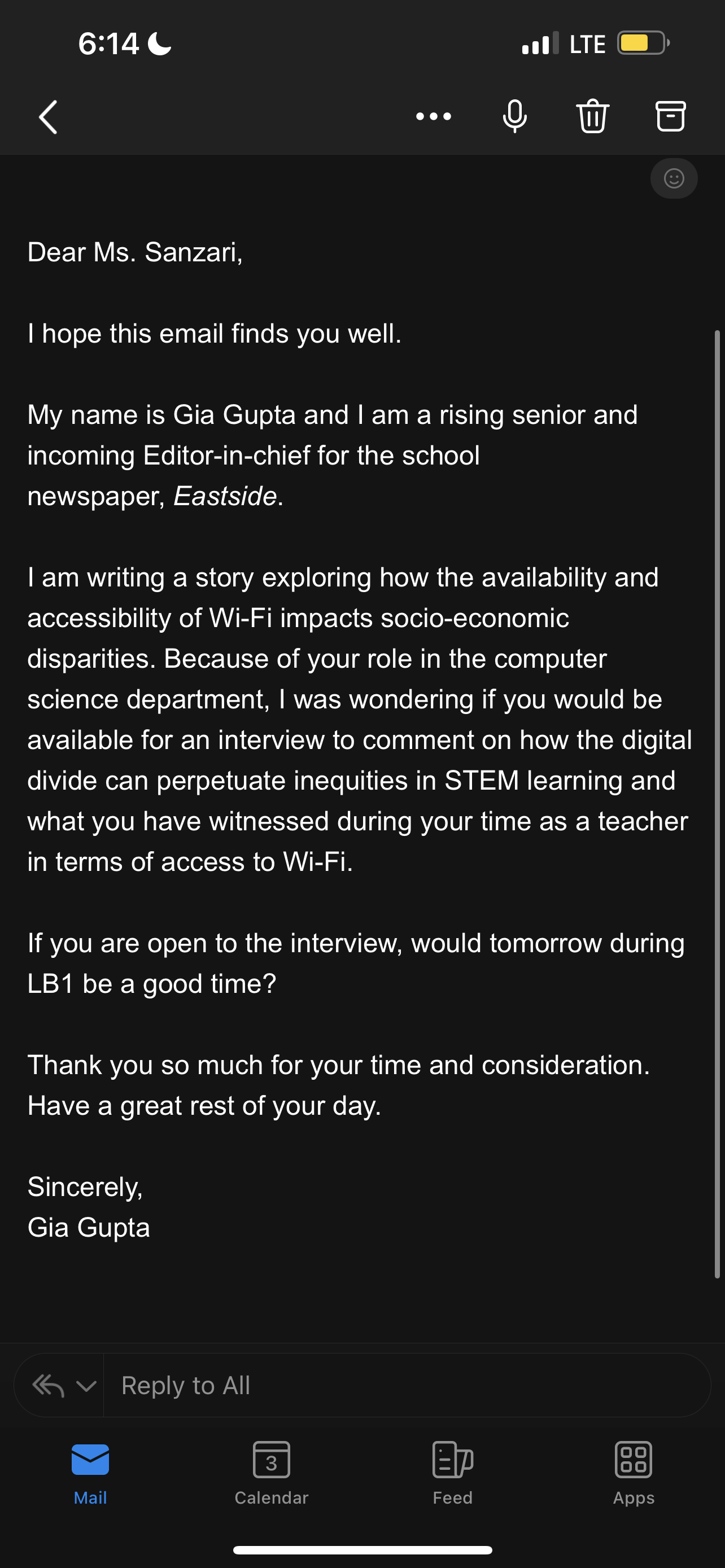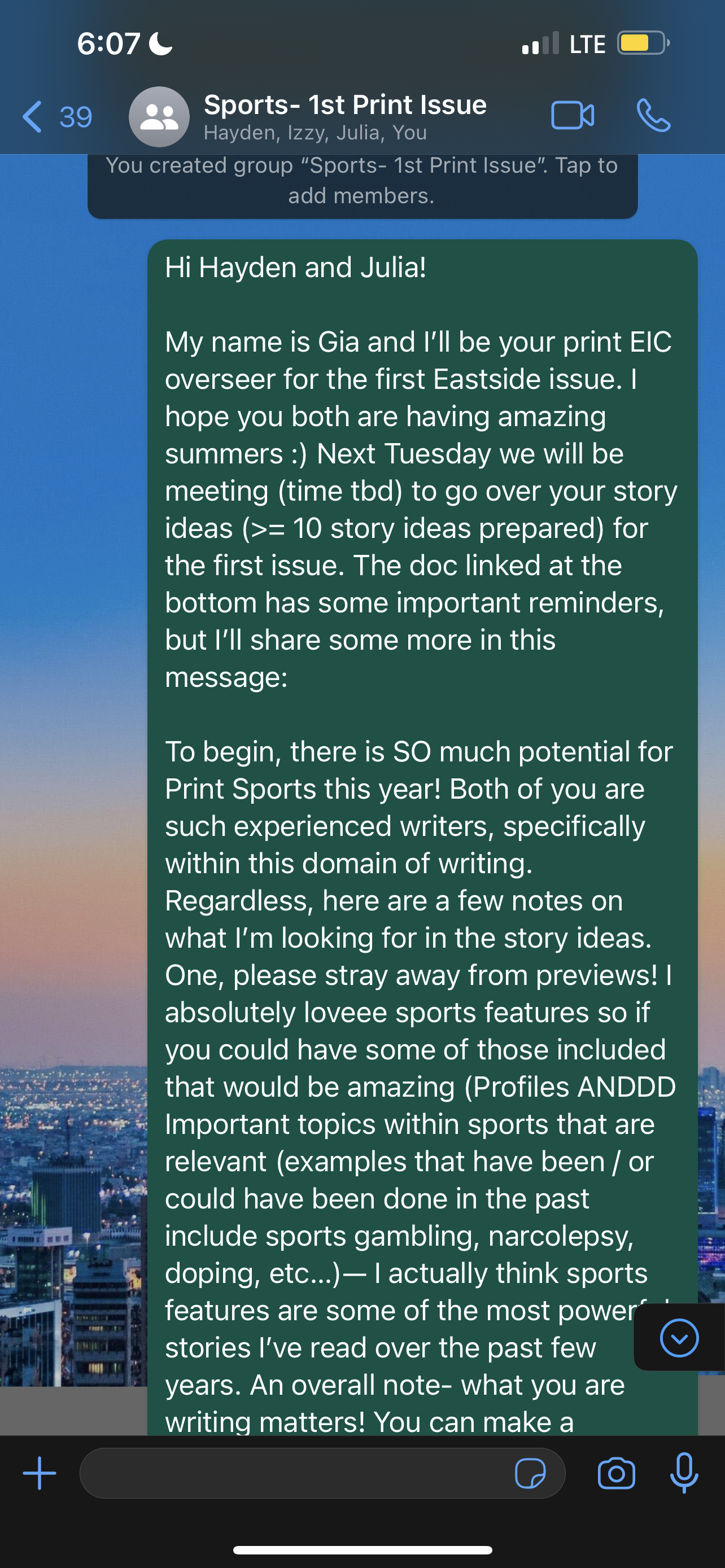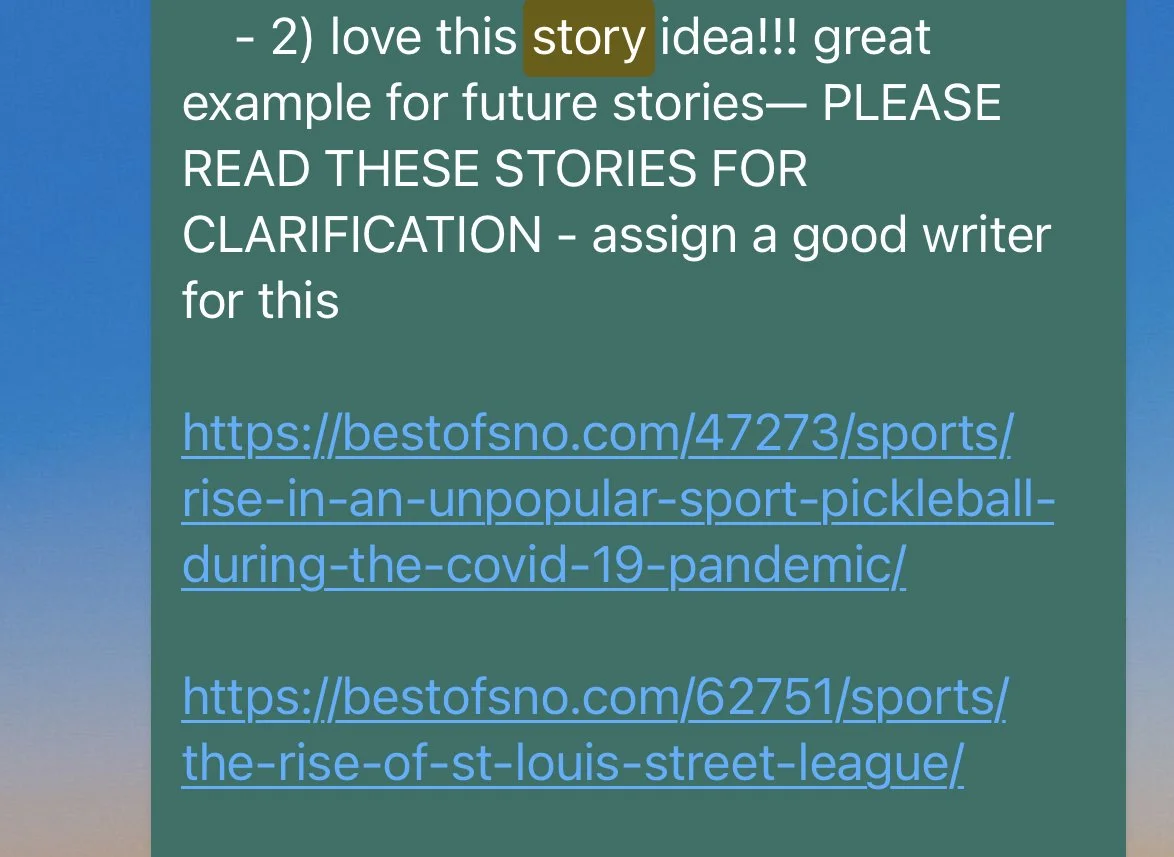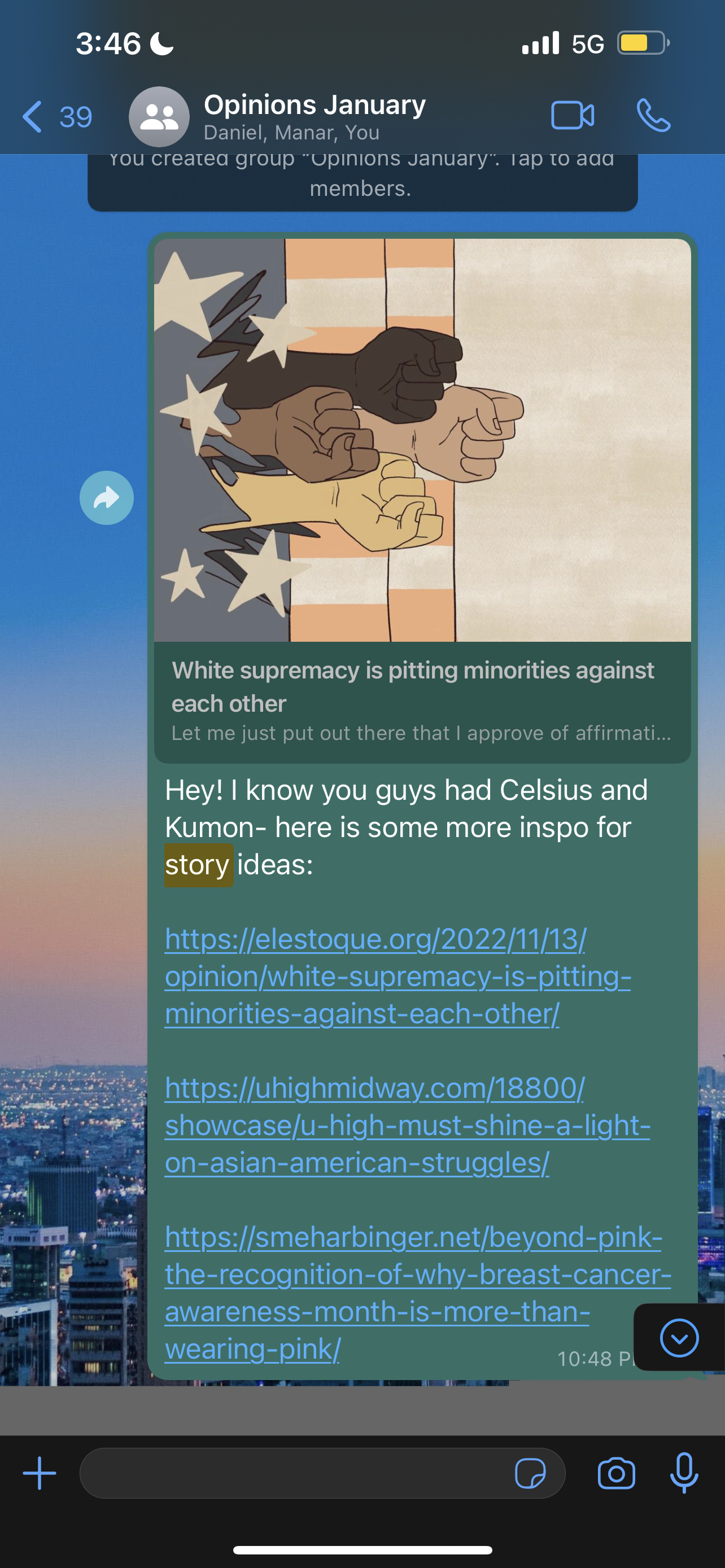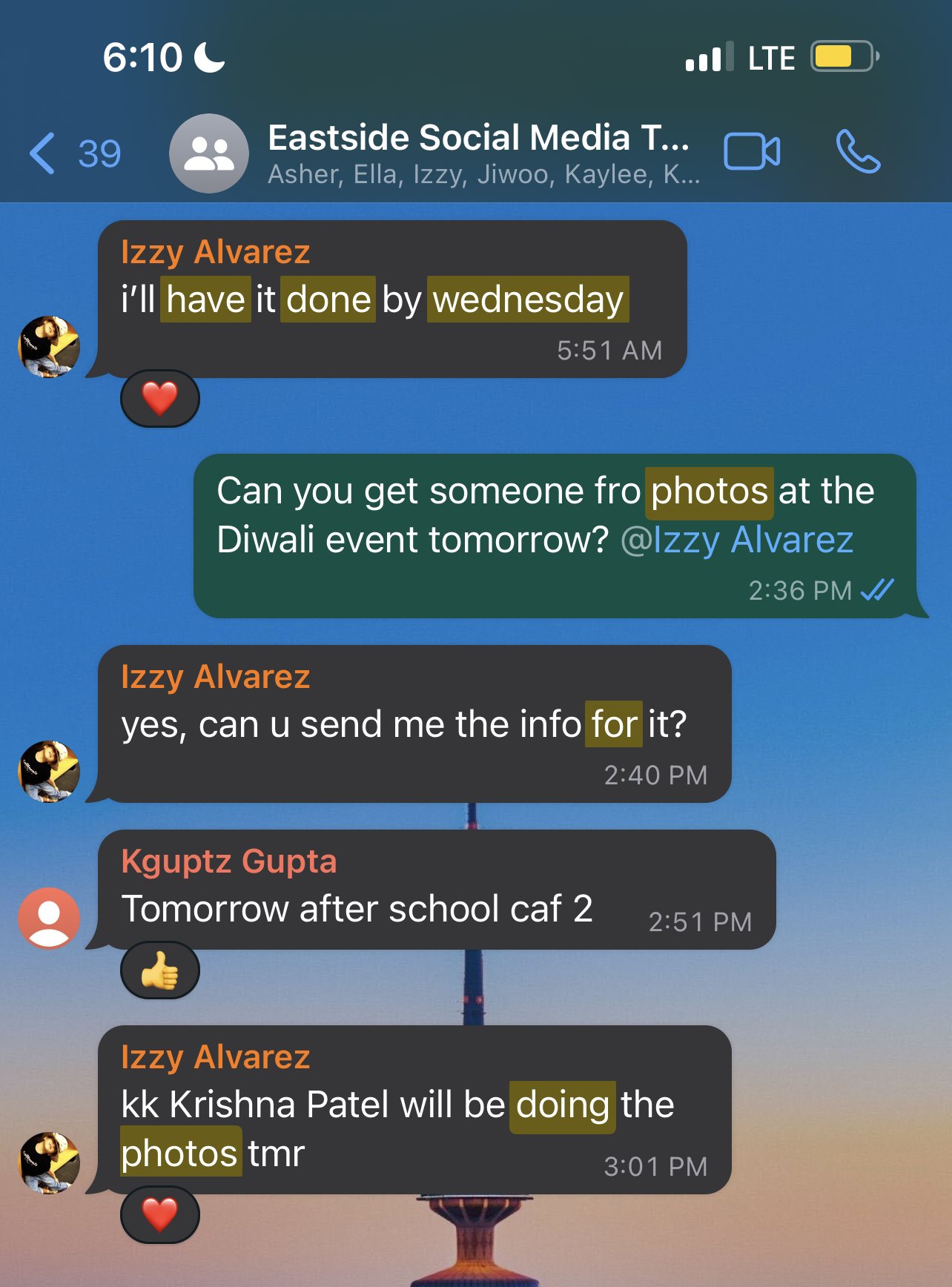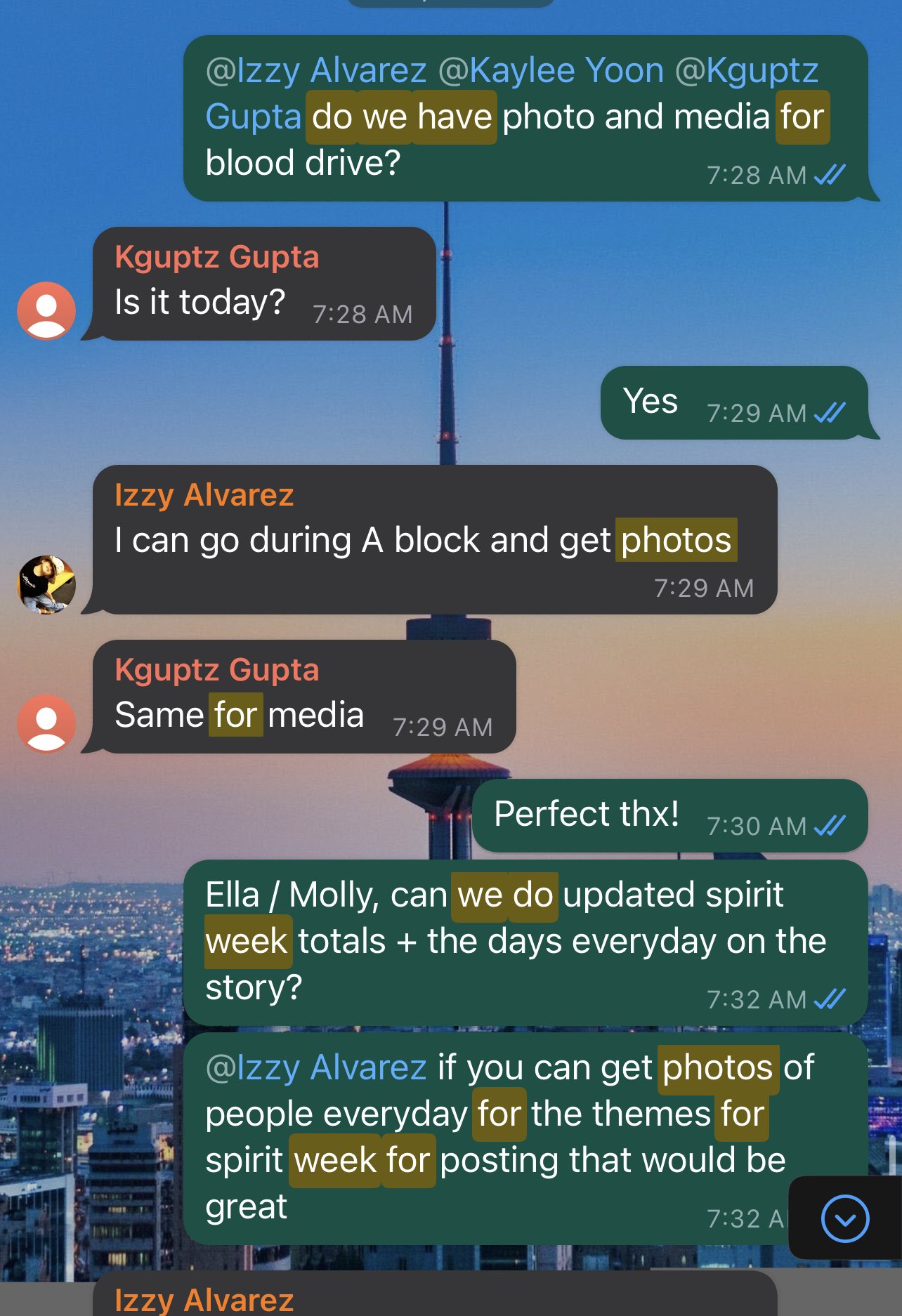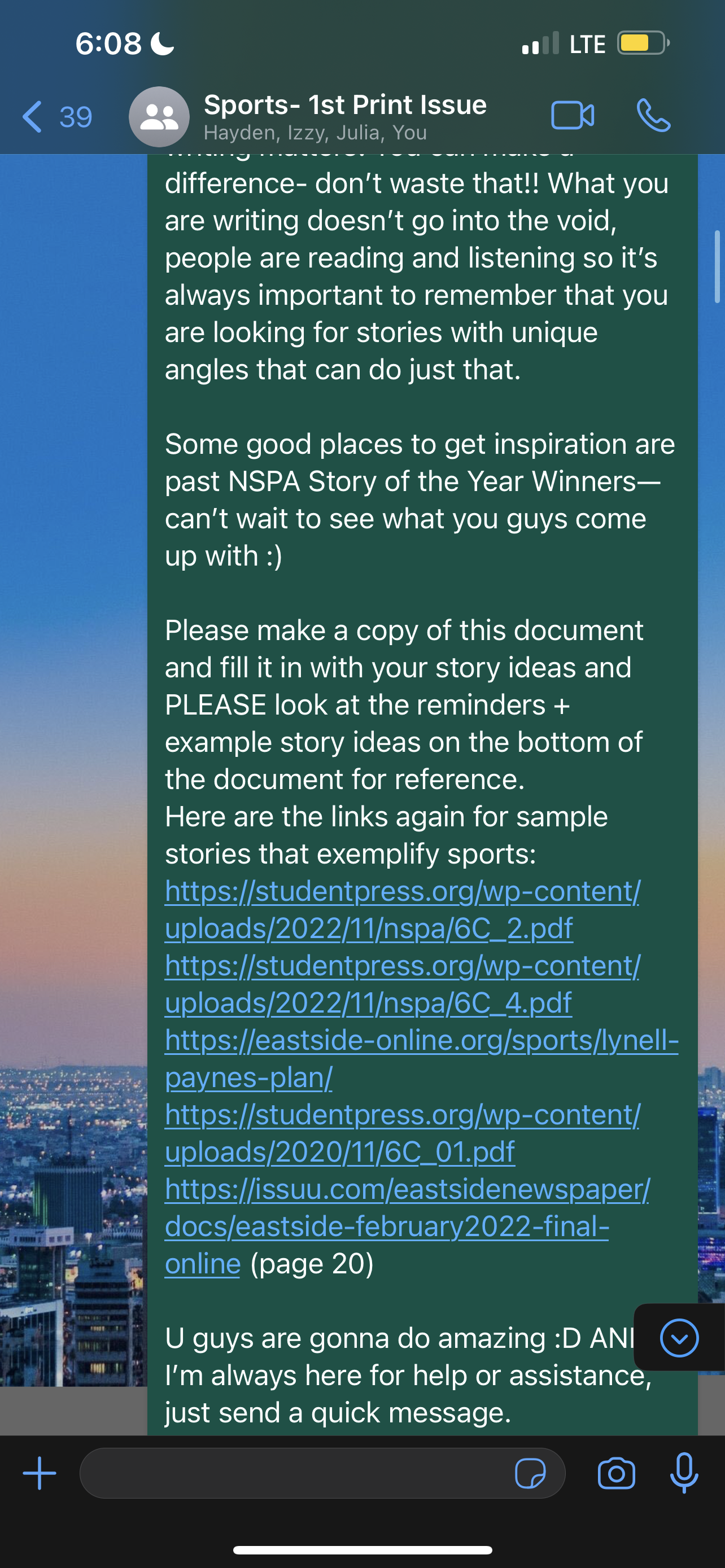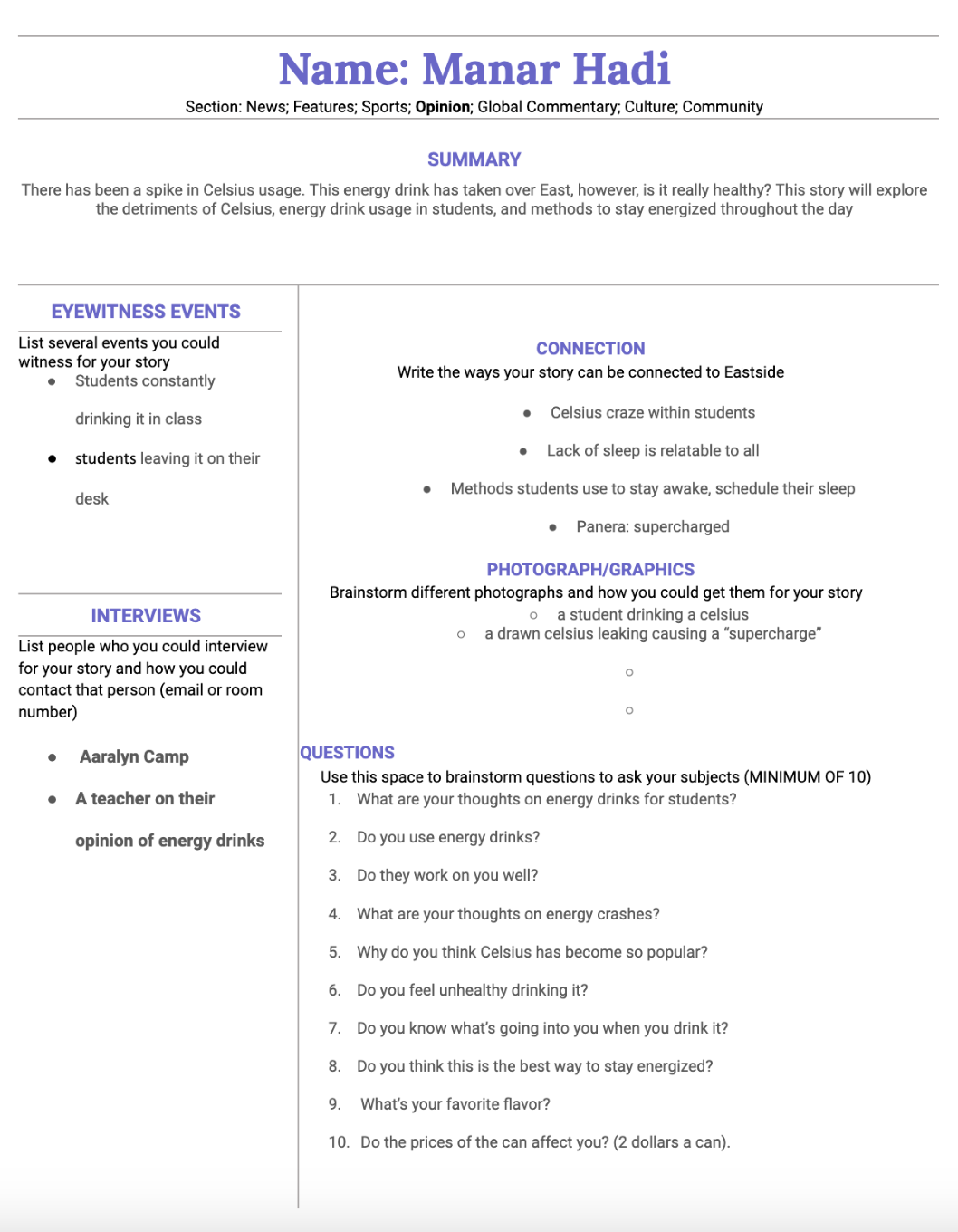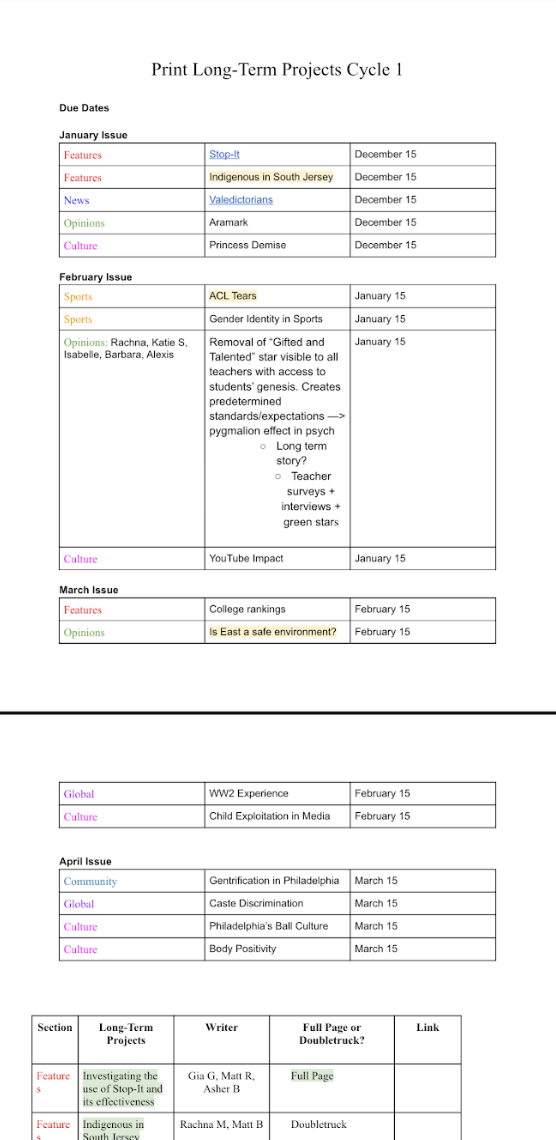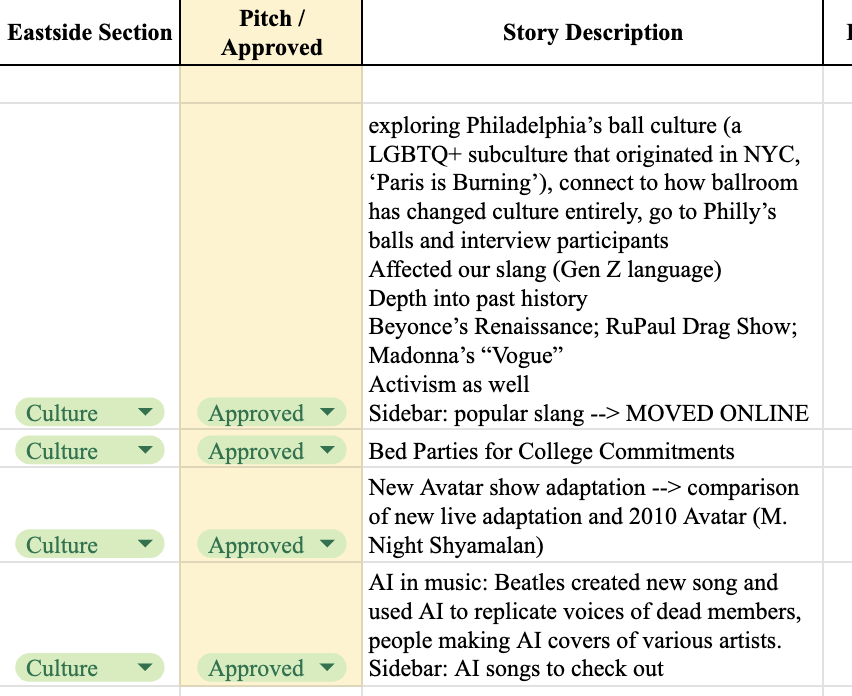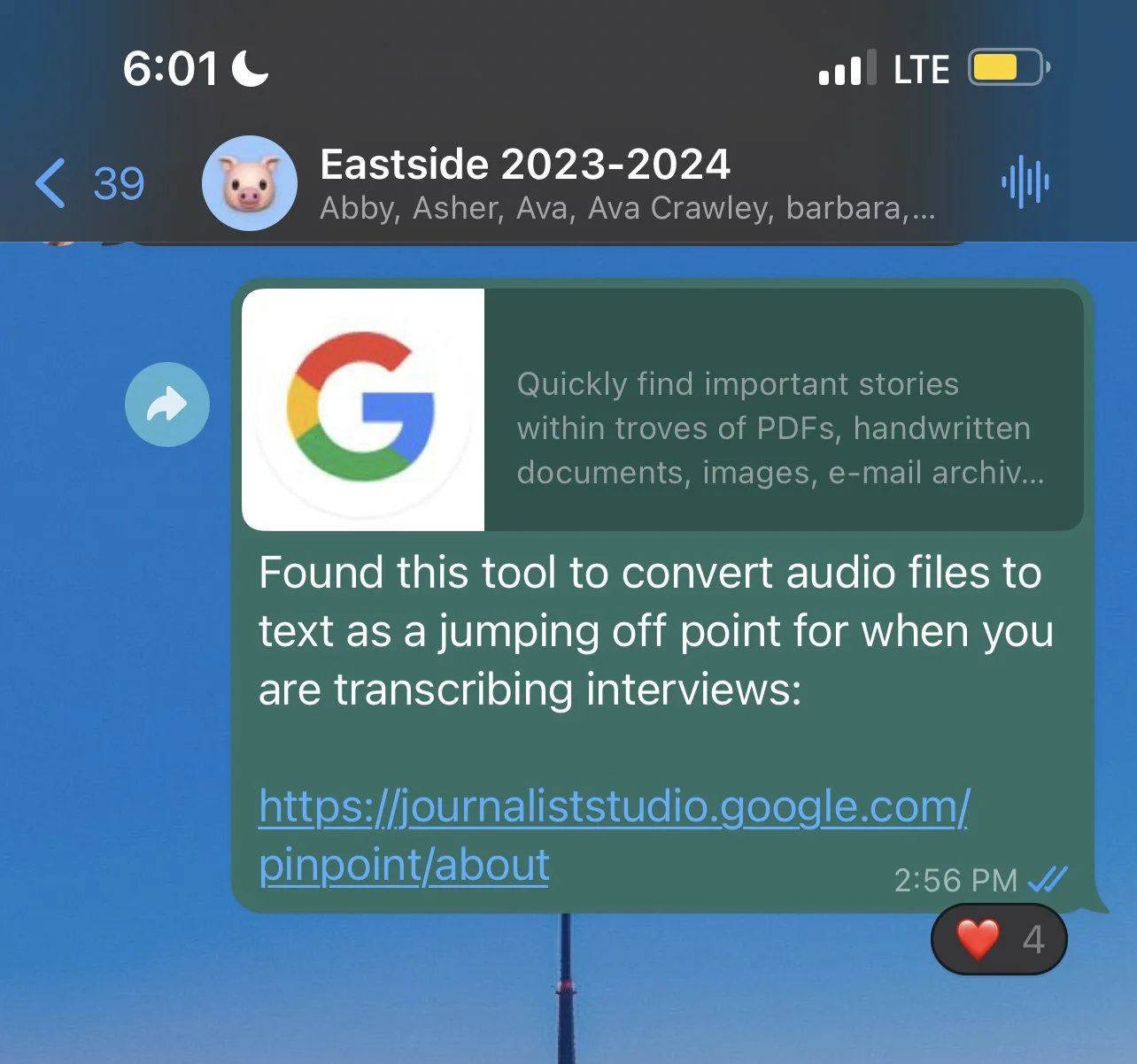Reporting
Story ideas
In the beginning of the year, I sent section editors quality work / outlets they could use as reference when deciding what stories to pitch. I also send out interesting events going on that might work well as stories to provide guidance during the process.
For the social media, I update our yearly calendar and send in prominent school event reminders to the social media group to make sure that we have coverage.
The above two pictures are messages I sent communicating resources for story ideas like Best of SNO.
To help the Opinions section come up with other story ideas, I went through other prime student newspapers and offered them examples that they could reference.
The above two pictures are messages I sent to the social media team to make sure that we were getting coverage for events like a Diwali event, Blood Drive, and Spirit Week.
I sent the above two messages to the Sports section at the beginning of the year to share prime sport story examples and details on how to come up with the best ideas.
Finding the best story ideas
To try to create a check on story ideas before they are pitched to the board, this year I tried to implement these pitch sheets that my co-EICs and I could check prior to full board pitches. I used the template that the McCallum newspaper provided me at the JEA-NSPA conference and it helped our board flesh out their pitches / angles more.
This is a sample pitch sheet that one of our opinion editors filled out for a story on energy drinks using the McCallum template.
Pitching
On our spreadsheet, I created a system where editors could put stories in ahead as “pitches” so that editors were not confined to only a few days of brainstorming story ideas. Additionally, I created the “long-form” story idea pitches this year at the beginning of the year where editors could pitch stories months in advance so they could have more time to work on their story.
This is our long-term story document that I created to try to promote more in-depth reporting not restricted to the shorter usual print cycle deadlines.
This is a portion of our spreadsheet that shows our highlighted column “Pitch / Approved.” This allows editors to put in their pitches to the spreadsheet ahead of time before we have official voting pitch meetings.
Interviews
In the staff manual I created with the Editorial Assistant, I found materials to help students through the interview process, the basis of which I was able to get through my mentorship relationship with another school newspaper, El Estoque and their own staff manual. I also make sure to send resources to help streamline the process of interviews in our group chat.
This is a message I sent to the Eastside group chat for an interview transcription tool I thought editors might find helpful.
This is a sample email I worked with the Editorial Assistant to put in the staff manual to show new editors how to establish communication with those they are looking to interview.
My experience conducting interviews
I establish initial contact as soon as I am approved to write the story in a respectful manner. I try to localize perspectives by reaching out to community members and experts in subjects that are from my local community whether it is university professors, parents, teachers, or general stakeholders on the topic at hand.



